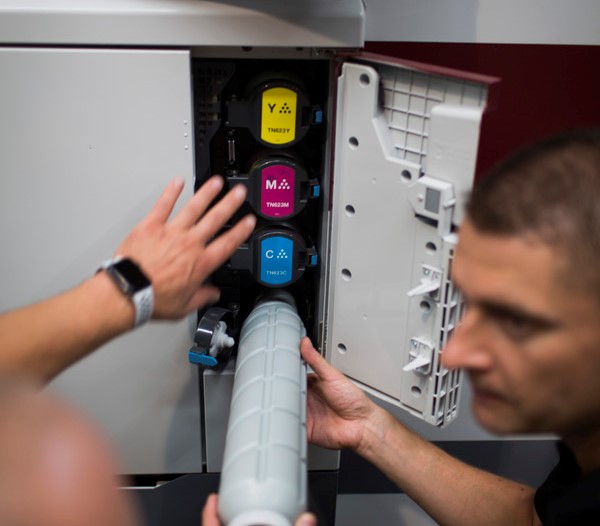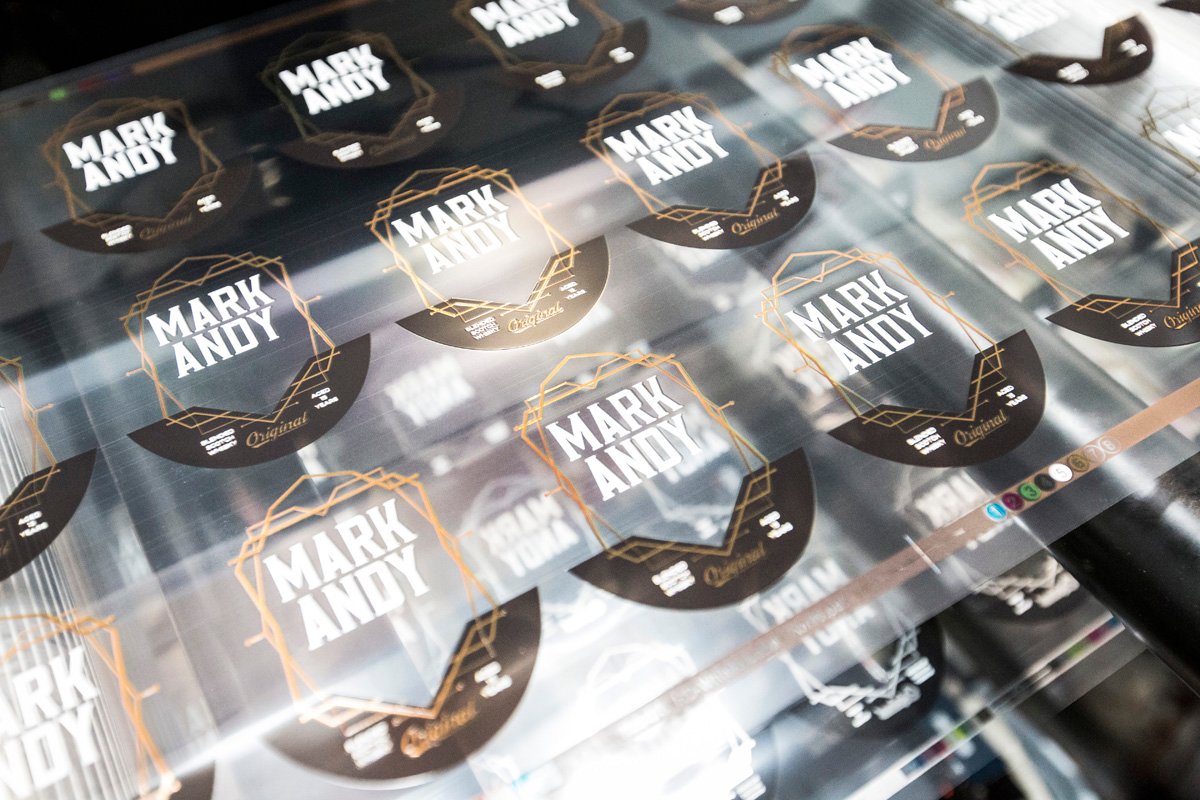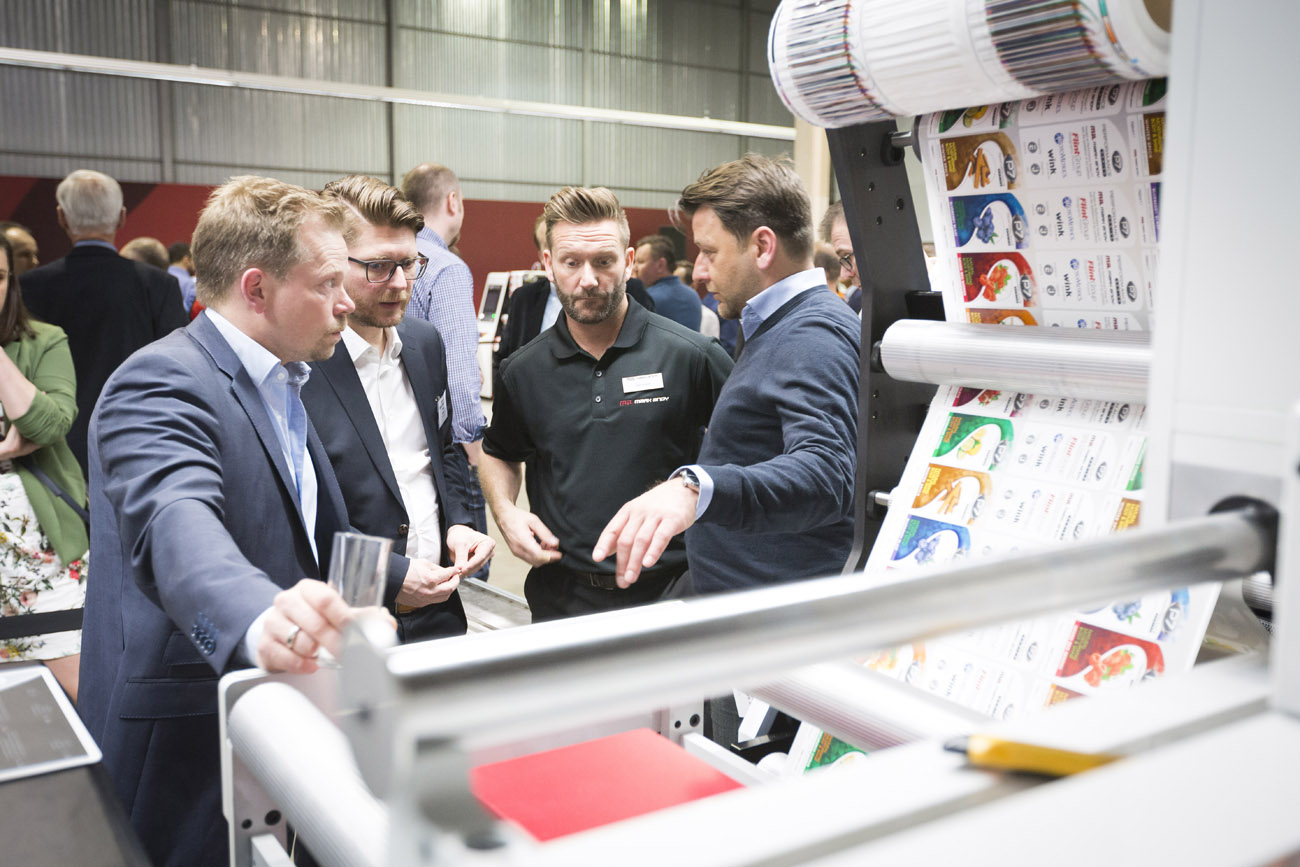5 Things You Need to Consider When Evaluating Digital
It’s almost 2020, and that said, every company knows they need advanced capability to serve the market. More often than not, this comes in the form of digital production equipment for labels and packaging.
Like any press purchase, there are various considerations business owners need to factor into the equation. We’ve outlined a couple of the big-picture ones below.
Ink Delivery System
When going digital, you are working with two primary options to lay down images: electrophotostatic (EP) or UV inkjet imaging systems. EP utilizes toner, consisting of either dry or liquid color agents, to image text or graphics. Toner particles are transferred to media by an electrostatic charge and are then fused to material with heat.

Known for its durability, toner delivers high-resolution. Our CMYK EP solution, Digital Pro, delivers 1200 dpi quality and also maintains a BS5609 certification. Additionally, toner takes on a less tactile appearance and is more inline with what the market (and brand owners) think of with regards to “digital”.
Inkjet takes on a slightly different approach, jetting UV LED inks from print heads to substrate. Touted as the future of print, UV inkjet is a more cost-efficient method for printing production volumes and can deliver a high gloss, tactile effect when not coated with a varnish or laminate. Quick note: you can do that all inline with a UV inkjet digital hybrid if your customer wants to match the “flexo look”.
While this information isn’t earth-shattering, it’s an important foundation for your press acquisition and will guide you to the right manufacturers. At Mark Andy, our digital portfolio consists of both toner and UV inkjet solutions, with many of our customers incorporating both Digital Series (inkjet) and Digital Pro (toner) hybrid systems into their operation.
Consumable Plans
So after you decide what you want as your primary imaging method, you should think about how you want to pay for your consumables. What best aligns best with your internal practices?
OEMs offer many different payment options for supplies, however, the most common are click-charge or pay-as-you-go pricing structures, the latter of which is standard to all Mark Andy equipment and Mark Andy Print Products supply fulfillment.
Your Customer’s Product Marketing Strategy
When consulting our prospects on digital, we encourage them to take a step back and identify what sort of finishes customers are looking for on short-run, high-mix, or variable jobs. Cold foil? Lamination? Colors outside the traditional gamut? Varnish? Pretty much everything core to flexography still applies in the digital label game, so when seeking to stand out, hybrid technology makes a lot of sense.

These embellishment options are at the core of your customer’s product marketing strategy when what’s on the outside serves as their primary revenue driver. If you take anything away from this blog, it should be to never forget the customer when talking through configurations of digital equipment.
Impact on Finishing Department
Speaking to configuration- how long has it been since you audited your finishing equipment efficiency? Does digital inline converting works with your business model? Are you already bogging down your rewind team with flexo or conventional digital? It may be wise to bring it all inline when evaluating another add to the pressroom. While the bulk of our install base reaps benefits of inline, you could configure our Digital Series HD and our Digital Pro in a roll-to-roll variation and get with our friends at Rotoflex and learn about their DF3 offline converting and finishing unit. Mark Andy Inc. is all about delivering customized solutions for unique business needs.
Learning Curve
Last but certainly not least- let’s talk on-boarding. Traditional digital is complex and requires an operator familiar with its technology and front-end complexities. If you are looking to carry over an operator that primarily does flexo, there will be a ramp-up period.

Not necessarily a bad thing, but often times we all are trying to do less with more and having a digital press built on a familiar flexo platform means skill crossover for operators and more interchangeability with your staff and the machines they can run.
Before You Go…
Adding or upgrading digital is inevitable, so make sure the type of machine and company you partner with complements the intricacies of your print business.
By factoring in these areas into your search for digital, you’ll be in good shape. This article, however, is just the starting point. We took the liberty of outlining everything you should find out from an OEM before buying in an interactive worksheet. We plugged in the details for standalone pieces of our digital portfolio and left some room for you to do your due diligence and see what else is out there.
I will say, True Hybrid is hard to beat. Not that we are biased or anything….
What does your company use to evaluate new technology? Let us know the important factors in the comments below.